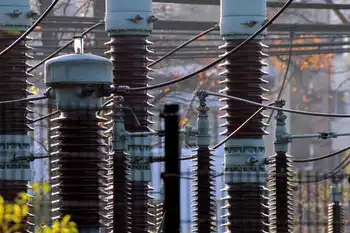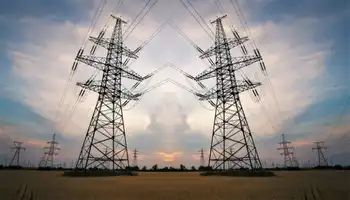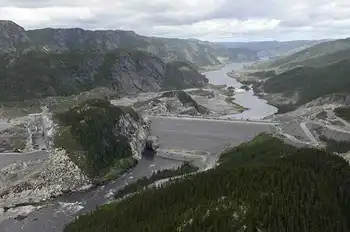Green Energy Act Alliance celebrates new Act
By Canada NewsWire
Substation Relay Protection Training
Our customized live online or in‑person group training can be delivered to your staff at your location.

- Live Online
- 12 hours Instructor-led
- Group Training Available
The Act lays the foundation for new measures to conserve energy and create renewable energy that will make Ontario a leader in green energy and green jobs.
"The government is holding the door wide open for renewable energy," said Deb Doncaster, Executive Director of the Community Power Fund and Director of the Green Energy Act Alliance. "Though the details about the tariff levels, grid access and community power still need to be worked out, the commitment on the part of the government is encouraging and the potential for Ontario enormous."
"Ontario's Green Energy Act could propel the province past California as the most innovative North American leader in the renewable energy field," said Denis Hayes, Former Director, the U.S. National Renewable Energy Laboratory and founder of Earth Day. "This is the sort of healthy, friendly competition between Canada and the U.S. that will leave us both better off."
The Act outlines a two-pronged approach, focusing on expanding renewable energy generation and strengthening the province's commitment to energy conservation. The new procurement mechanism for renewable energy will be delivered through a feed-in tariff, modeled after the successful policies of Germany and France. This strategy will be complemented by new provincial standards for renewable energy planning. The province will upload from municipalities the regulations for planning renewable energy projects to ensure that they are the same across the province. All told, the new Act will amend 15 government statutes and, when fully implemented, have over 50 supportive regulations.
Toronto Hydro Corporation is pleased that the Ministry of Energy has implemented the Green Energy Act. The initiative gives local distribution companies (LDCs) more opportunity to develop and implement conservation programs. In addition, the Green Energy Act enables Toronto Hydro to expand its capabilities in participating in sustainable clean generation projects.
"We have always been committed to reducing peak demand in Toronto through conservation and demand management," says David O'Brien, President and Chief Executive Officer, Toronto Hydro Corporation. "The Green Energy Act not only allows us to continue with our successful conservation programs, but also build on our portfolio."
The company introduced the first peak demand reduction target for Toronto in 2005 and has continued to pioneer programs like peaksaver, an air conditioner load control program that now involves almost 50,000 Torontonians, and enables Toronto Hydro to remove almost 60 Megawatts from the grid during heat waves. Peaksaver has been adopted by the Ontario Power Authority and other LDCs in the province.
"On initial review, it seems that we will be able to accelerate the introduction of conservation and renewable energy projects. I'm certain that Toronto Hydro and all Torontonians will support the province by reducing our electricity usage and our reliance on traditional generation methods year over year."
"Ontario farmers are ready to do their part to produce more green energy while putting food on the shelves," said Don McCabe, Vice-President, Ontario Federation of Agriculture. "The Green Energy Act is an opportunity to remove barriers to renewable energy generation so we can use our sustainably produced on farm resources."
Under the Act, strengthened energy conservation measures will include: energy conservation planning at the local level, energy audits for homes upon sale and purchase, new energy efficiency standards in the building code, higher energy efficiency standards for appliances, and upgrading government buildings to new energy efficiency standards.
"This Act puts in place the framework for green energy to thrive and could set us on a path toward a future based on the efficient use of renewable energy," said Keith Stewart, Climate Change Campaign Manager, WWF-Canada. "We look forward to working with the government to build on this framework as the Act is finalized and implemented."
On behalf of its membership from across the province, the Green Energy Act Alliance has been recommending that Ontario develop a feed-in tariff procurement system that encourages the rapid growth of renewable energy and a focus on energy conservation. For the past month, representatives of the Alliance have been travelling across the province speaking with Ontarians about how their communities can benefit from renewable energy.
"As we have been travelling the province, residents, farmers, First Nations, cooperatives, municipalities, distribution companies, commercial operations and institutions have been clear: they want to be conservers and generators of clean, green, sustainable energy," said Kristopher Stevens, Executive Director, Ontario Sustainable Energy Association. "The Green Energy Act promises to be a landmark piece of legislation and we should all be proud that our government is listening and leading us."
The government predicts that 50,000 jobs will be created over the next three years as a result of this legislation. This employment will be in every sector, from steel mills to law firms and manufacturing plants to contractors.
"First Nations across Ontario are quite excited about the Green Energy Act and are anticipating supporting mechanisms to become proponents in the emerging renewable energy sector," said Michael Fox, one of the founding Directors of the First Nations Energy Alliance.
The Green Energy Act Alliance's recommendations for an effective Green Energy Act can be found online at www.greenenergyact.ca











